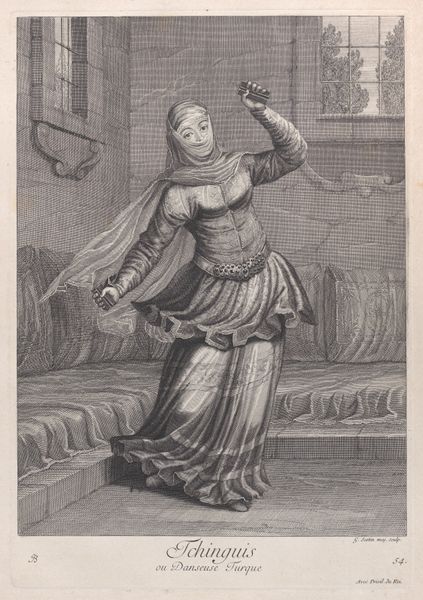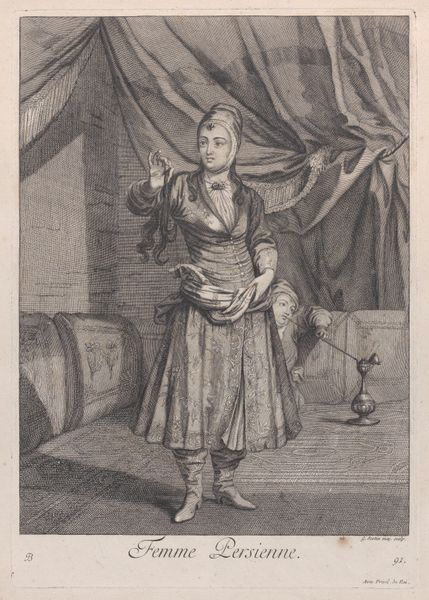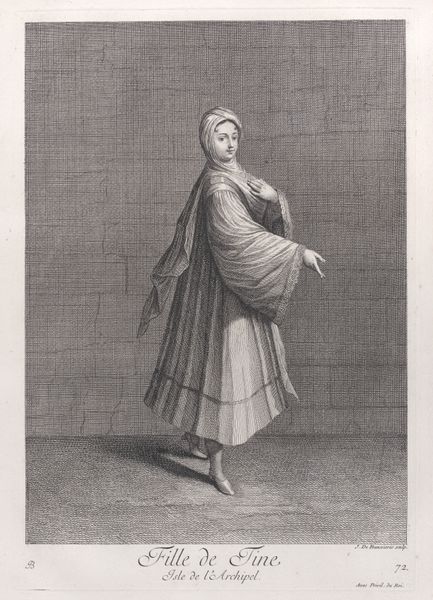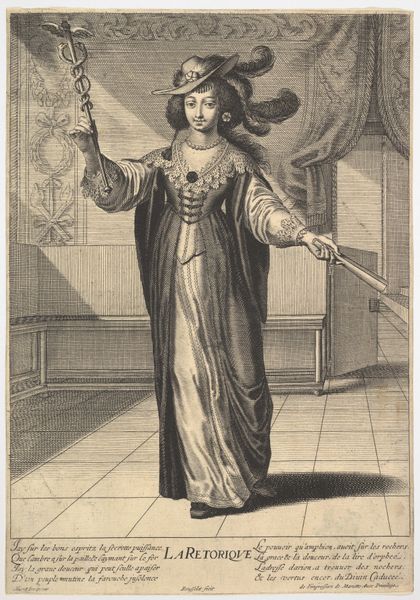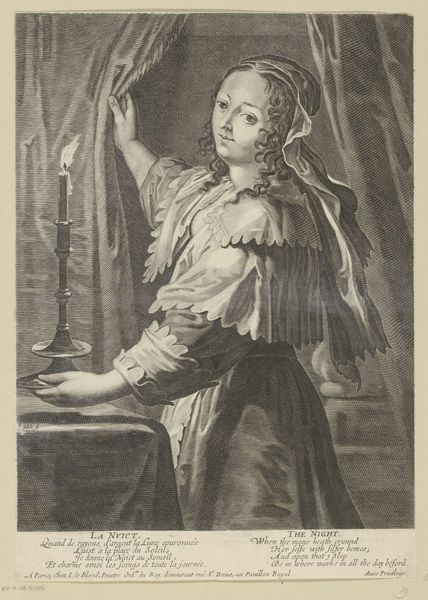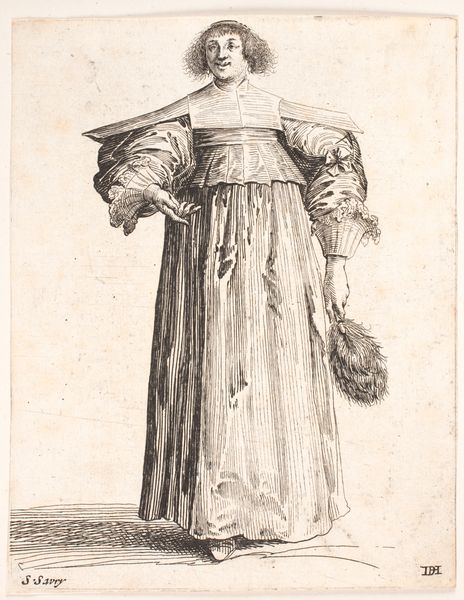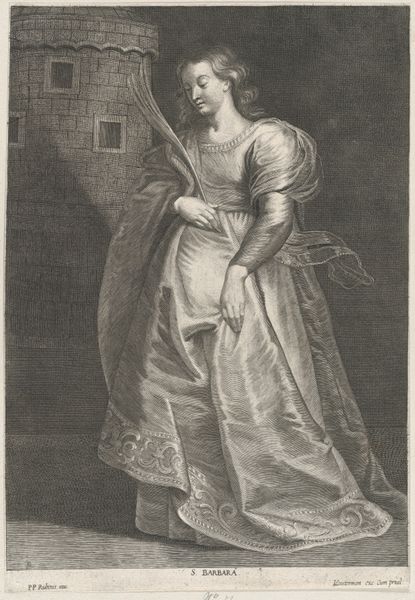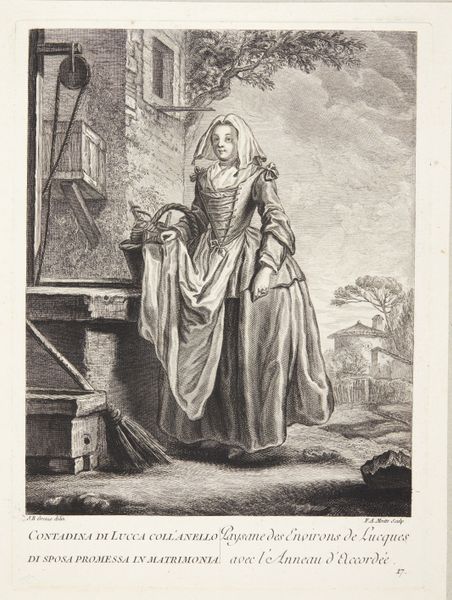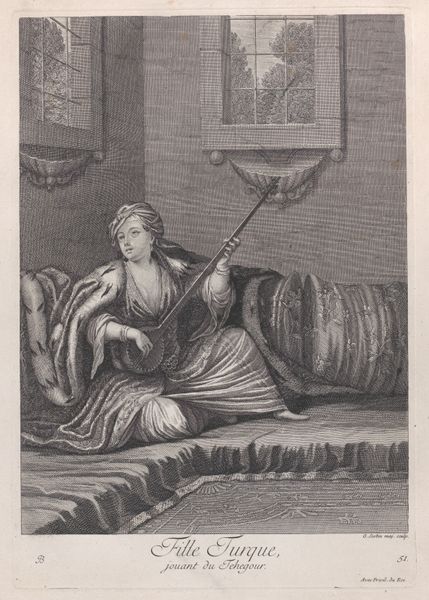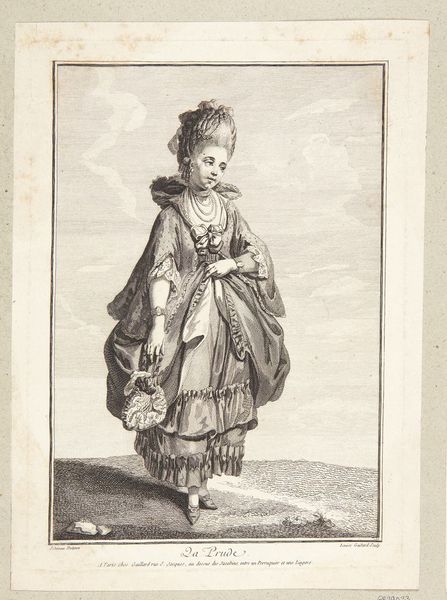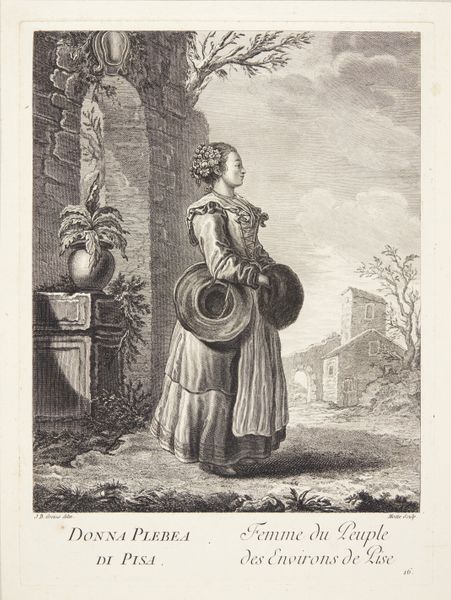
Fille de Chio, Isle de l'Archipel, plate 74 from "Recueil de cent estampes représentent differentes nations du Levant" 1714 - 1715
0:00
0:00
drawing, print, engraving
#
portrait
#
drawing
#
baroque
# print
#
portrait reference
#
history-painting
#
engraving
Dimensions: Sheet: 16 1/2 in. × 12 in. (41.9 × 30.5 cm) Plate: 14 1/8 × 9 13/16 in. (35.9 × 25 cm)
Copyright: Public Domain
Editor: This is Jean Baptiste Vanmour's "Fille de Chio, Isle de l'Archipel" from around 1714-1715, a print housed at the Met. The starkness of the engraving feels really deliberate. What visual cues stand out to you? Curator: Notice the figure's placement. The engraver used fine, closely spaced lines. Observe the subtle modeling of her face and clothing juxtaposed against the stark geometry of the room. It's a structured contrast. Editor: Yes, the sharp lines of the background really emphasize the curves and flowing fabric of her dress. The light seems so even and artificial. Curator: Precisely. Light, as you say, functions here not to illuminate realistically, but to articulate form. Examine the parallel lines used for shading and volume, especially within the folds of the dress. These linear gradations contribute significantly to the perceived depth and volume. Editor: That makes sense. It's like the artist is creating depth not through realistic shading but through this really controlled, almost mathematical application of line. Did that control come from the limitations of the medium? Curator: Certainly, but beyond technical necessity, the choice contributes to the work's aesthetic and semiotic construction. The rigorous application of line signals a visual vocabulary rooted in Neoclassical order, subtly asserting structure even in the portrayal of dress and drapery. Note, for instance, how the lines describe shape and imply movement without losing any precision. Editor: It's amazing how much the artist achieves with what appears to be very simple. It forces you to slow down and really examine the detail and technique. Curator: Precisely, and in doing so, we come to understand that it is the mastery of structure, line, and controlled tonal range which ultimately speaks to the inherent aesthetic language employed.
Comments
No comments
Be the first to comment and join the conversation on the ultimate creative platform.
